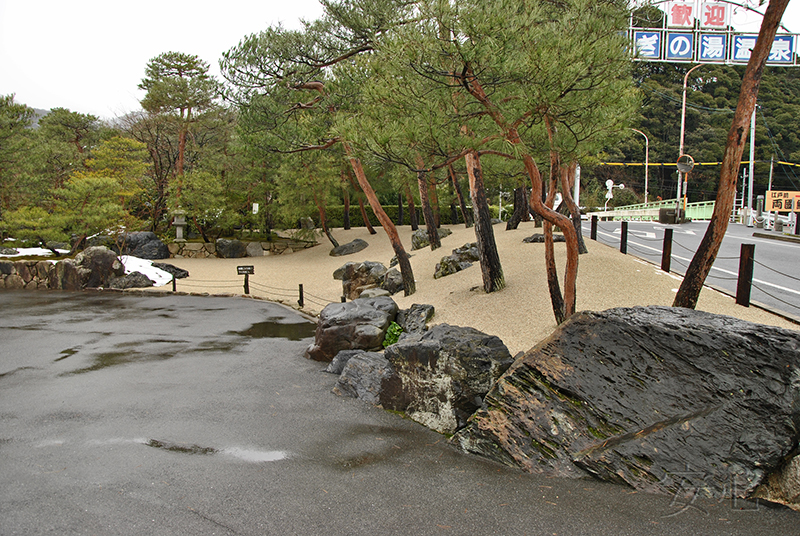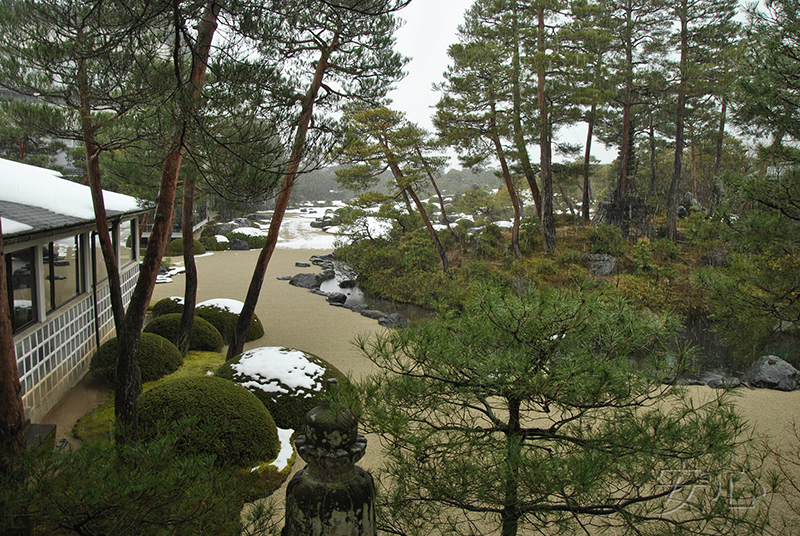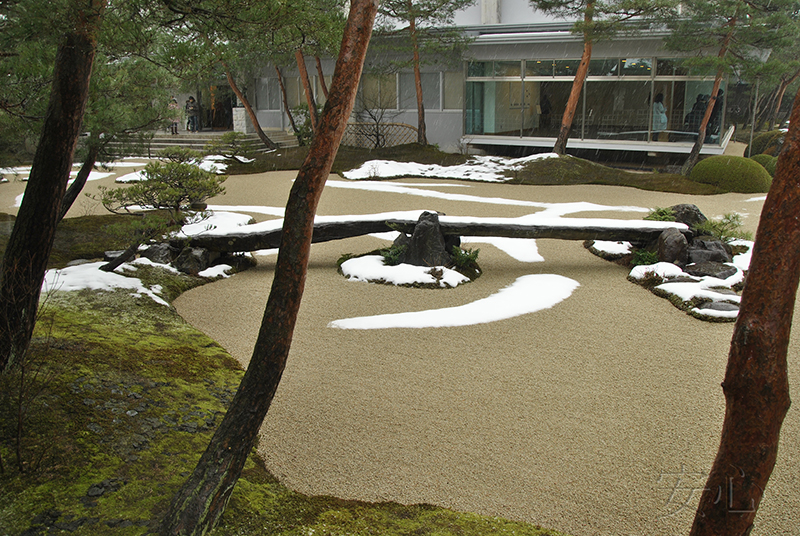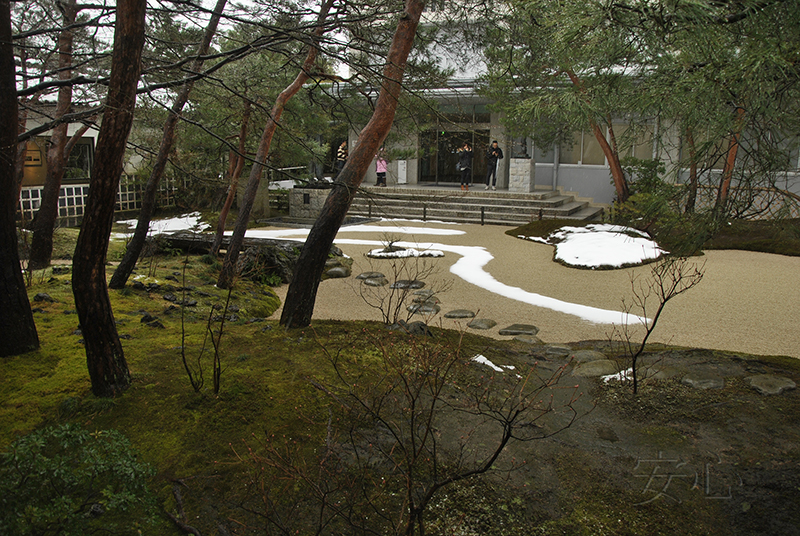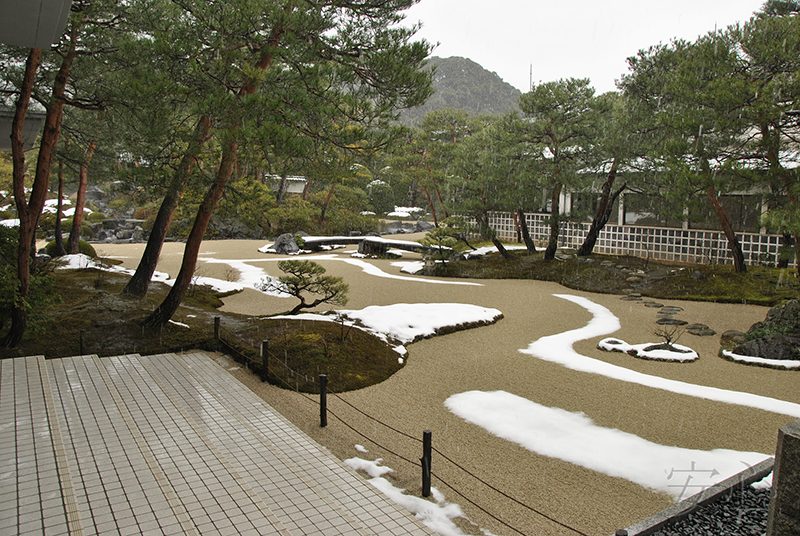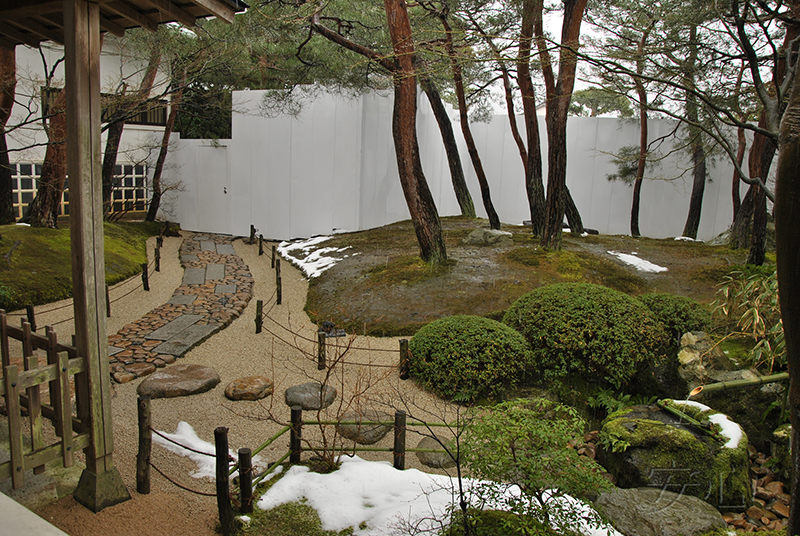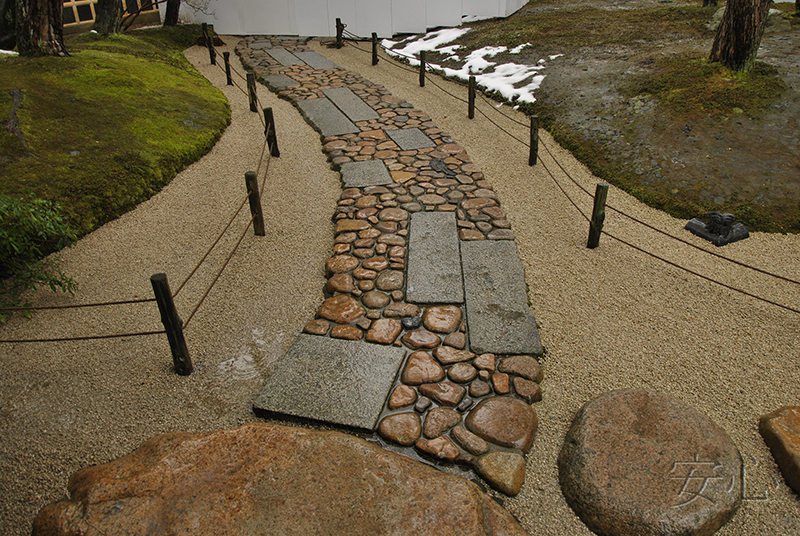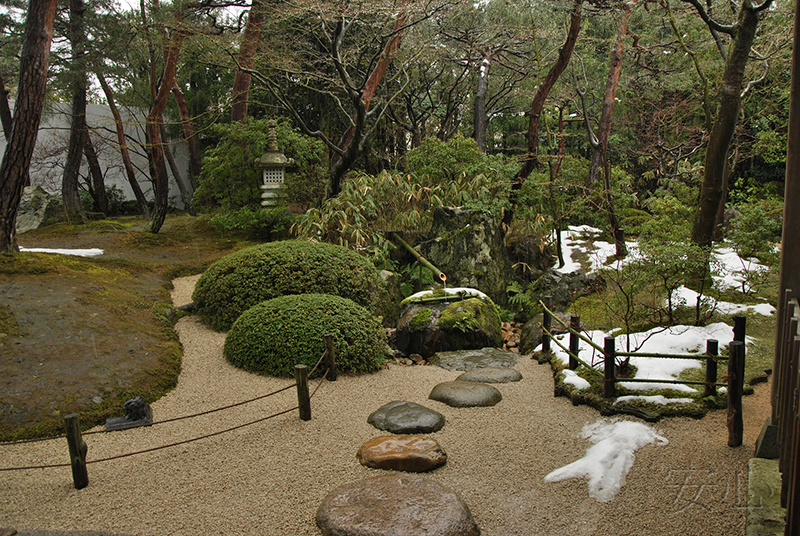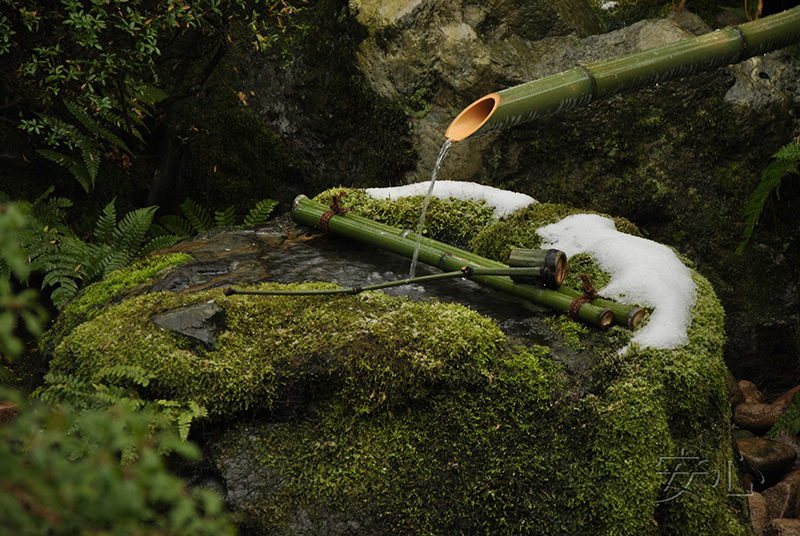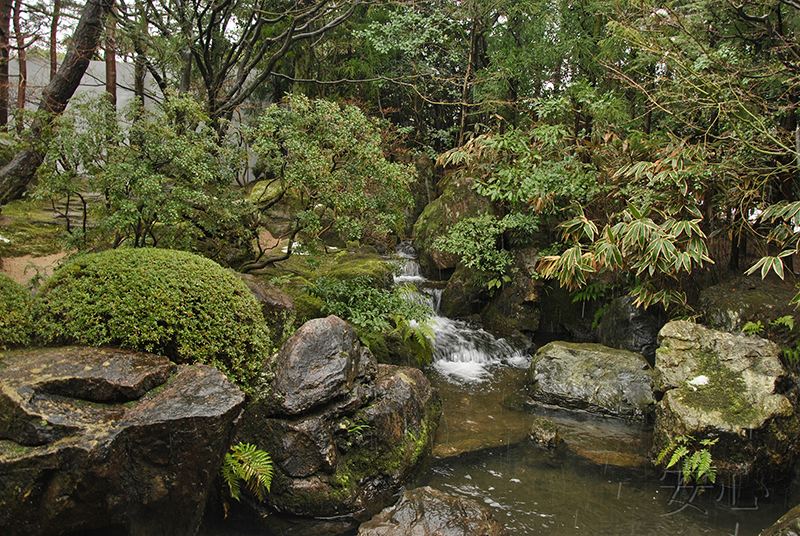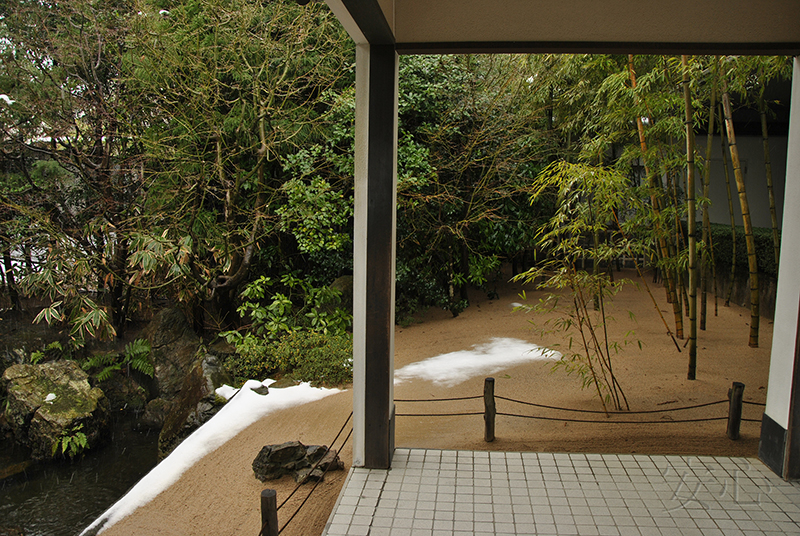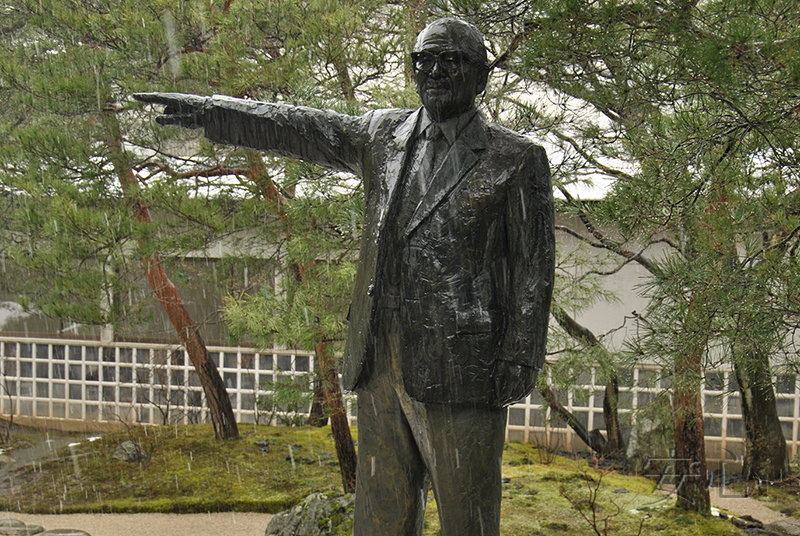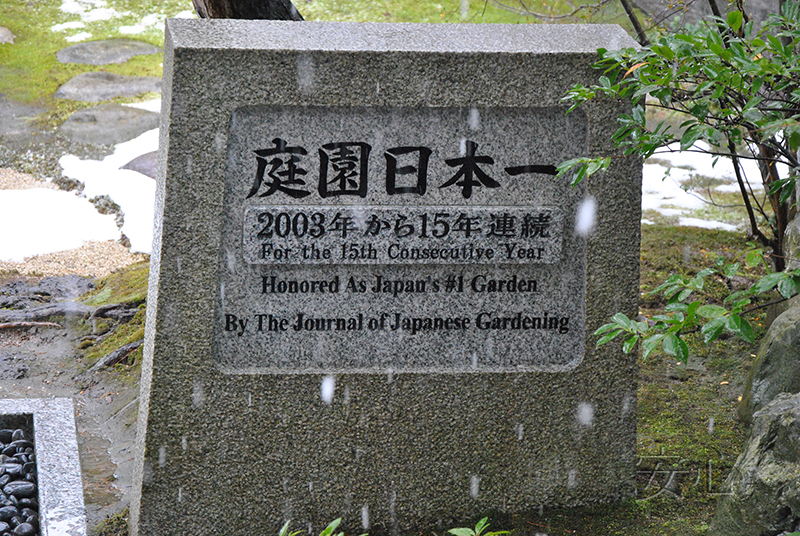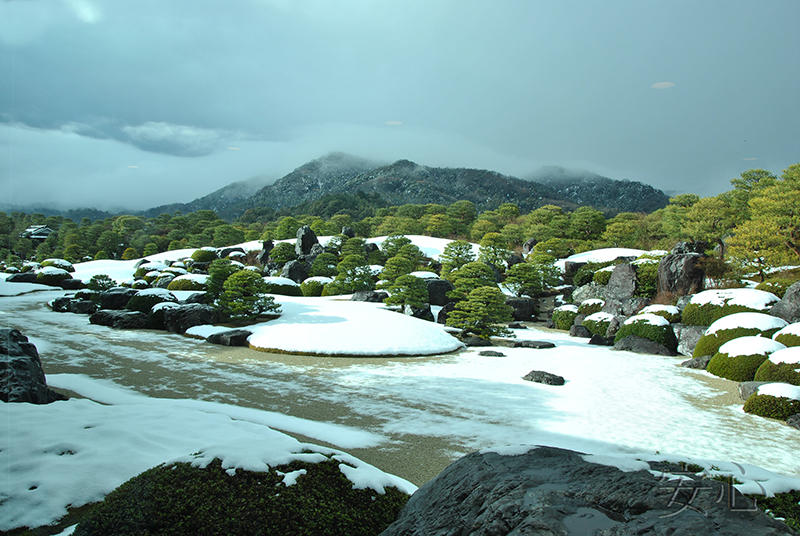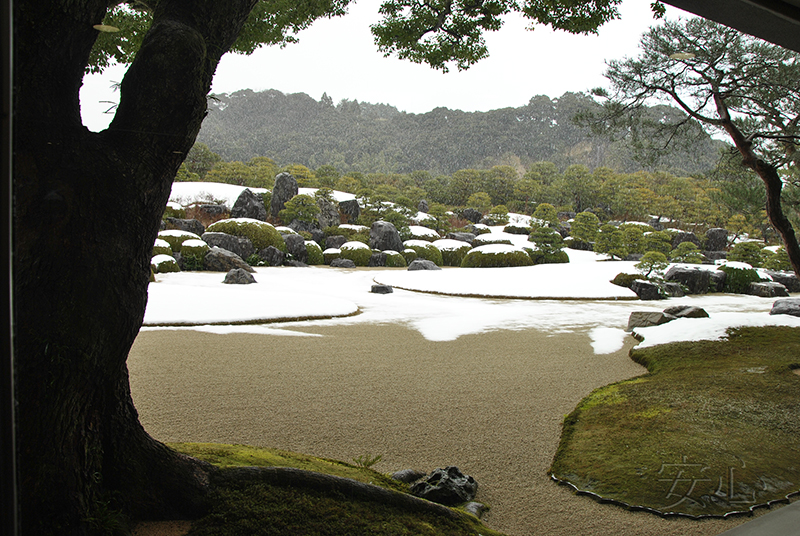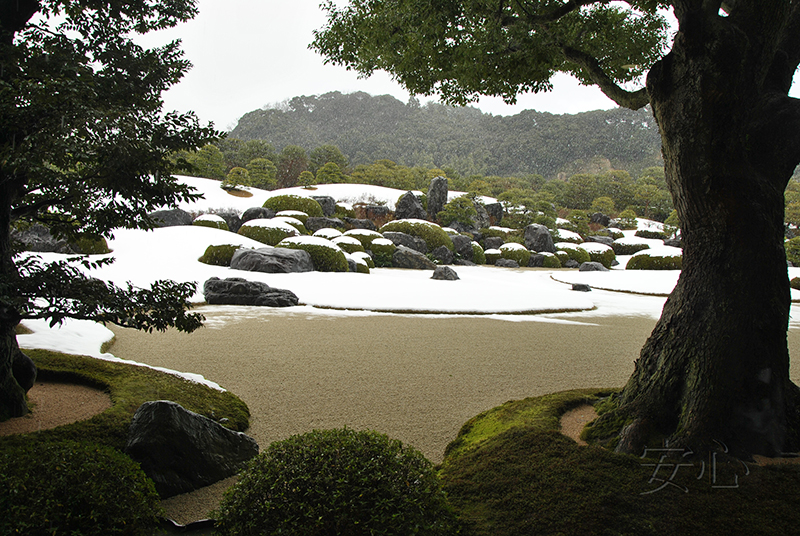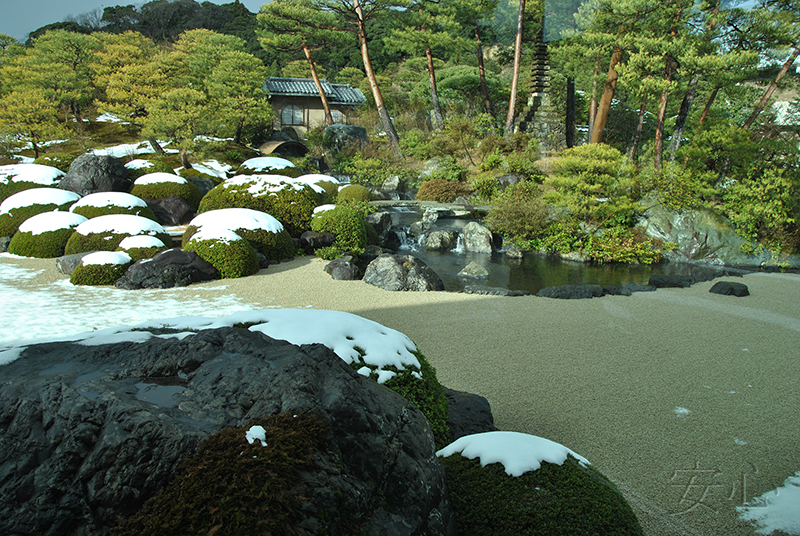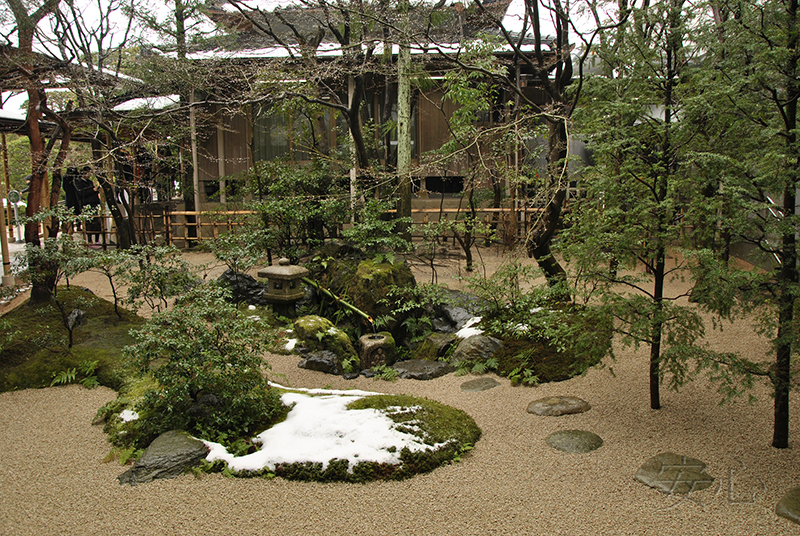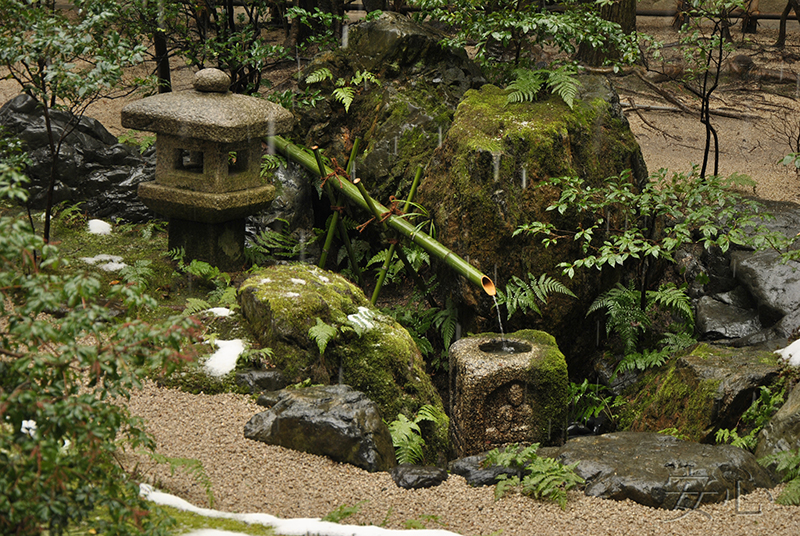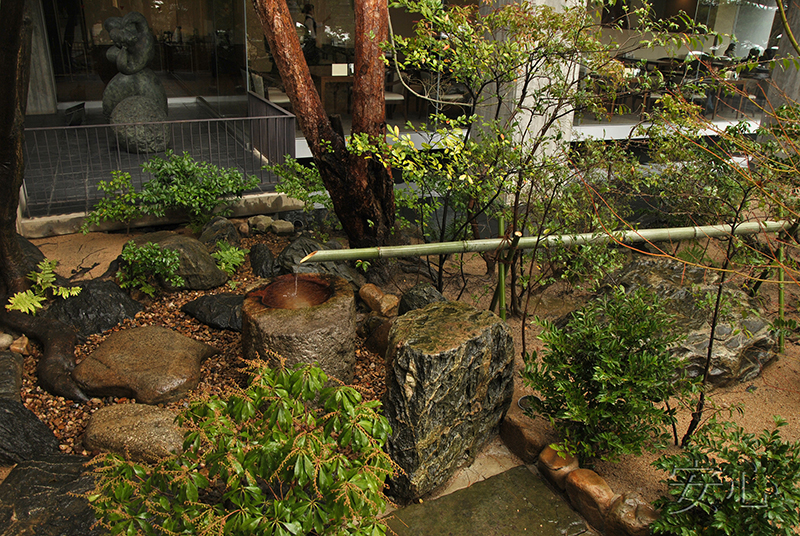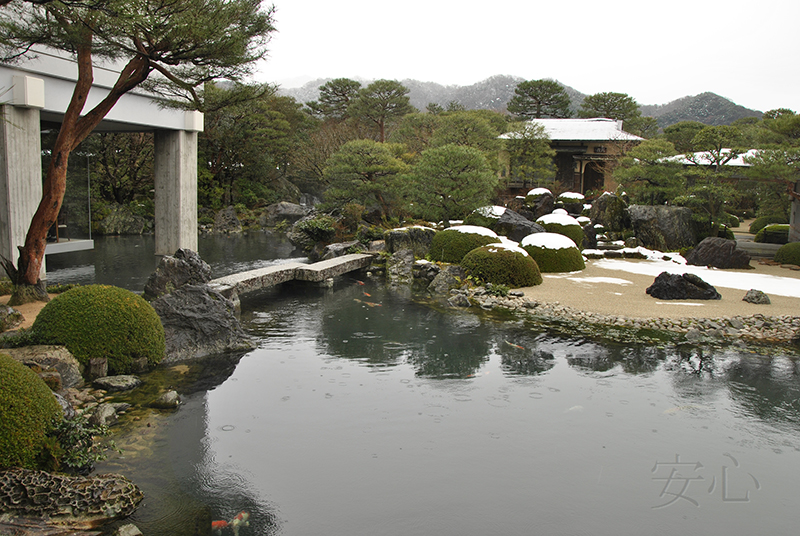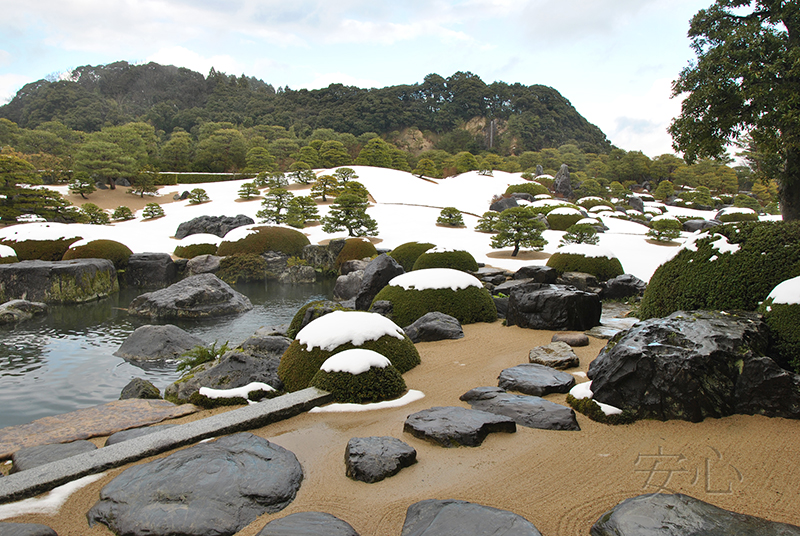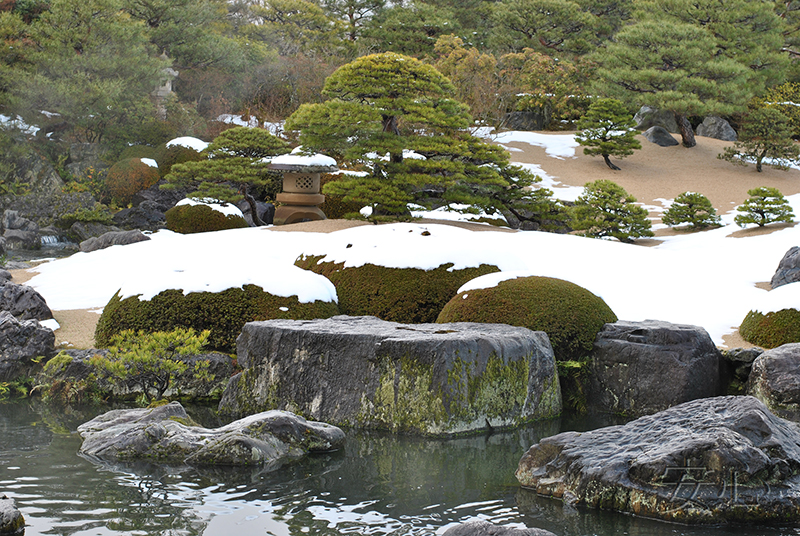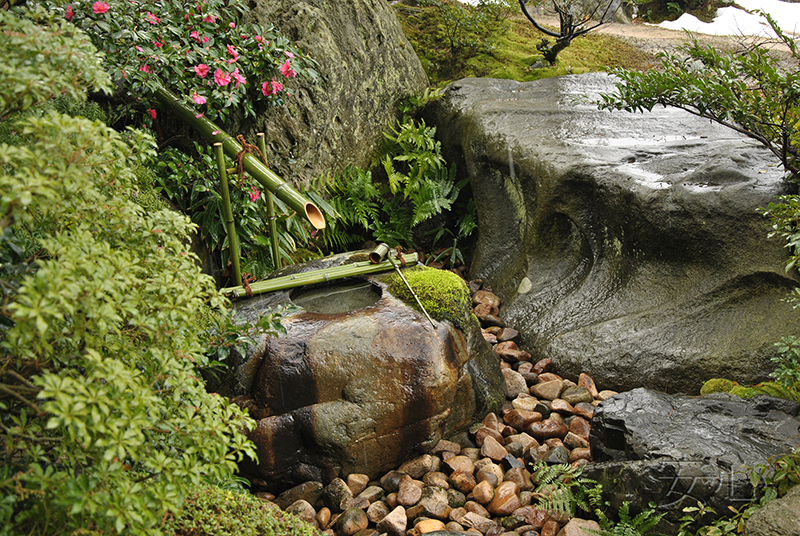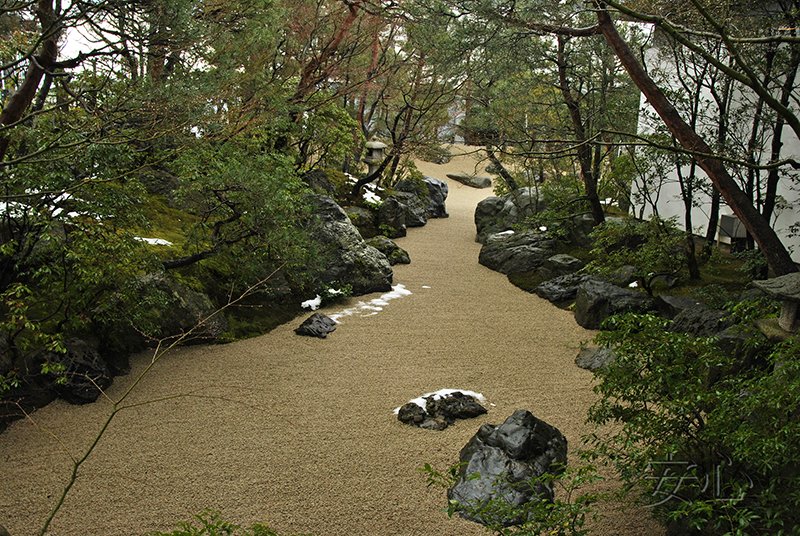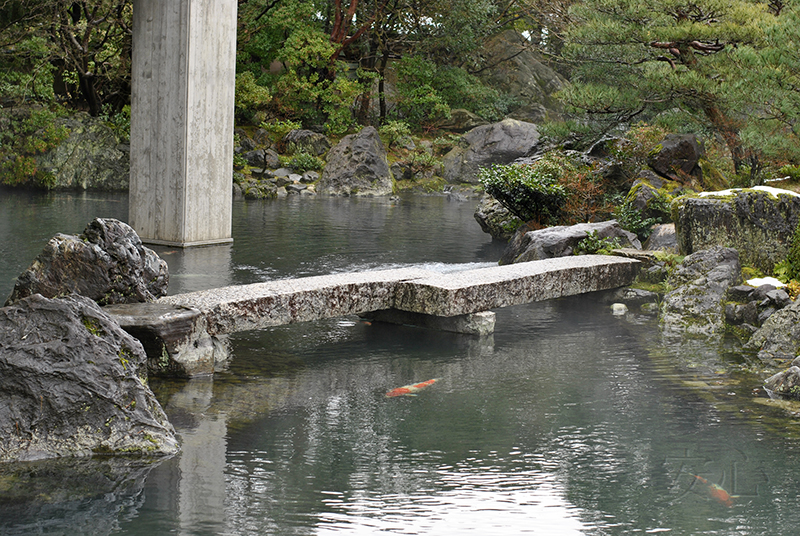
Adachi Museum Gardens
Adachi Gardens were the main goal of our visit to Matsue city located in the western part of Honshu Island. However, they are not in the city itself. We had to go by train one stop to Yasugi Station. There are shuttle basses, which take tourists to the museum. It take only 20 minutes. When we arrived, the driver gave everyone a pieces of paper with note in six languages (Japanese, English, Chinese, Korean, French and Italian). There was written that before entering the museum, you need to take a ticket to the shuttle. You need to figure out how many hours you spend there, and take a ticket for the right time. Most likely, this was done so that there was enough space for everyone on the bus.
A ticket to the museum is quite expensive compared to most gardens in Japan, 2300 yen. However, for tourists there is a 50% discount. Well, in which country is this possible? Traveling in Asia, we used to the fact that at best the price is the same for local and foreigners, but in most cases it is much higher. And only in Japan you can pay lessthen japanese! So, don't forget to bring your passport with a tourist visa.
Already at the entrance it becomes clear what we are going to see. The garden seems to continue beyond the territory, on both sides of the entrance. In fact, this is the first garden, it is called "The Reception Garden". Light gravel, which symbolizes water, spreads from the depths, creating the illusion of a real stream flowing from the mountains between the trees.
There are six gardens, or you can call it paintings, although the boundaries between them are arbitrary and not always noticeable. In most cases, you can admire gardens through the glass from the museum building. And these are precisely the pictures, since, moving from one hall to another, from one window to another, we see new angles, new canvases painted by a brilliant artist. Everything is thought out here to the smallest detail: somewhere there are benches, somewhere you go from one pavilion to another through the courtyard, but somewhere you can go outside and look at the garden not through the window.
On the day of our arrival, nature made a gift to us - it began to snow. Of course, winter in Japan is not very comfortable time for people, but some of the inconvenience is more than offset by the amazing views of the gardens during snowfalls.
The first garden that visitors meet on their way is the moss garden. It is located in a small corner. The passage is organized so that the territory can be viewed from almost all sides. Trees are planted at an angle. The idea of the designer was that pines growing on the slopes of the mountains should not be planted strictly vertically.
Suddenly we found another part of this garden. Elegant mossy pines rise majestically over the hills overgrown with moss. The space below is filled with light pebbles.
The path connecting the exit to the door on the opposite side is a real work of art!
The path of stepping-stones lead to tsukubai. The stone-bowl is so overgrown with moss that its own texture is barely perceptible.
There is a stream in this small garden, cascading down the hills. On the shore there is a small bamboo grove.
After going through the moss garden, we saw a statue of Adachi Zenko, the founder of this museum. He was born and lived in Yasugi city. The businessman’s dream was to combine painting and garden art. After World War II, Adachi Zenko began collecting works of Japanese painting. Then he bought a plot of 165,000 sq.m. in the hilly area and started to create a garden.
According to opinion of the authoritative American magazine "The Journal of Japanese Gardening", since 2003 Adacht exclusively aesthetic qualities, and not historical value or popularity.
Famous designers and architects were invited to create the garden. So, the moss garden, which is shown above, was designed by Kojima Saichi.
Then begins the main garden of the Adachi Museum, the Garden of the Dry Landscape. Its author is Nakane Kinsaku, a well-known designer who has created many beautiful gardens during his life. This work of him is a real celebration of the beauty and harmony of nature.
The center of the composition are three large stones, symbolizing the rocks where a waterfall takes the beginning, rush down and connect to a wide river of light gravel. Window openings, and sometimes trees, become a kind of framework for the picture.
A little bit to the right there is a real cascade stream. It is difficult to say at what moment it looked most spectacular, during a snowfall or immediately after, when the sun appeared.
Soon, we have a chance to go outside again. We move from one building to another admiring the small garden on the way.
Here we saw two water devices at once (tsukubai).
Next we get to the opposite side of the building. Here it is possible to go to a small platform and immerse yourself in the contemplation of the Garden with the Pond. To his right of the pond there is Seifu Tea House, designed for sencha tea ceremonies.
Well-formed trees combined with stones give to this place a noble appearance. The passage through the gate looks especially impressive.
Having gone down several steps, you can approach the pond almost closely and admire the koi carps floating in the water.
On the other side of the pavilion is another garden, the Garden of White Gravel and Pines. It was created based on the painting "Beautiful Beach with Pines" by the famous artist Yokoyama Taikan, who worked in the XIX - XX centuries. On slopes covered with snow-white sand, pines of different sizes are arranged in an artistic order.
In the background there is a waterfall, its the water falls into a wide stream flowing into a large pond. Stones (Saji-ishi) were brought for this pond from Tottori Prefecture.
And if you turn your head to the right, in the distance you can see another waterfall. It's hard to believe, but it is artificial! The height is fifteen meters. This place was created by analogy with another Yokoyama Taikan painting, Waterfall in Nachi.
In the foreground, on the right, we saw tsukubai. At this time of year, when almost nothing blooms, the bright flowers of camellia hanging over a bamboo spout looked especially touching.
As a Westerner, it always seemed to me that such an inaccessibility, the remoteness of the garden from the viewer, the inability to come closer, to look, to touch, to soak up the aromas, will reduce the attractiveness of the garden. But, as it turned out, I was wrong. In this way the impression on the viewers is much stronger. We hear what the artist wants to say, we see what he wants us to see and what is better to pay attention to. The author of the garden periodically teases the viewer, gives us the opportunity to leave the room and get a little familiar with the world of beauty, and then again puts us into the gallery, making such moments even sharper, and the memories of them even brighter.
Garden Information:
Address: 320 Furukawa-cho, Yasugi, Shimane, 692-0064, JAPAN
Opening hours: from 9 a.m. to 5 p.m.
For foreign citizens, admission is half the price, do not forget to bring your passport!
anshin©2011All rights reserved. When using the materials of the site, reference is obligatory.
Proposals for co-operation, as well as comments and suggestions on the site please send to the address: anshinsad@gmail.comtel: +7 (965) 121-80-60, 10am-20pm

